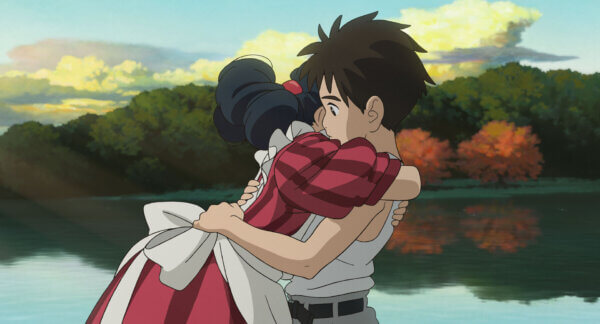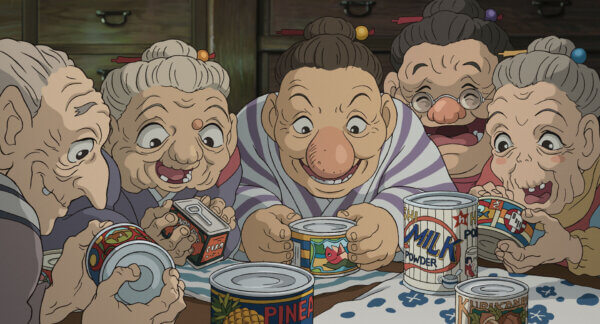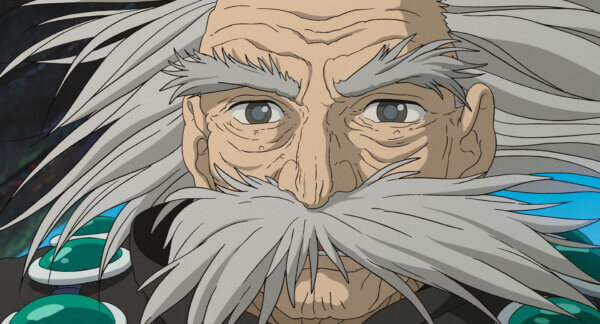The Boy and The Heron – Review
The following review contains light story details for The Boy and The Heron.
When it comes to a filmmaker as prolific as Hayao Miyazaki, any new addition to his filmography is bound to be compared to, and likely overshadowed by, his previous work. There are few filmmakers in any medium, let alone animation, with legacies as impenetrable as the Japanese auteur. His imaginative and breathtaking dreamscapes have been endlessly analysed and strung together into a canon of shared aesthetics, settings, characterisations, and themes. When Miyazaki graces us with a new magnum opus, people are quick to connect the dots, spot the similarities, and expand the ongoing narrative with poise and insight.
It’s always intellectually enriching to unearth this subtext, even more to discover a larger paradigm, but to what point does this reduce the film’s individual standing? There is a popular belief that every work you make should be treated as though it is someone’s first time seeing your work. It can sometimes seem like everybody and their mother has seen iconic films like Spirited Away or My Neighbour Totoro, but what makes Miyazaki eternal is that there will always be fresh eyes on his work. For all we know, The Boy and The Heron, the filmmakers’ latest (and, until its World Premiere, was thought to be his last), could be somebody’s first Hayao Miyazaki movie. If so, they are likely going to have a lot of questions.
The filmmaker’s 12th feature film follows Mahito (Soma Santoki), a 12-year-old boy whose mother is killed in a Japan hospital fire during World War II. Flash forward just a few years and his father has moved both of them out of Japan and into a new family; Mahito’s father has remarried his wife’s younger sister, Natsuko (Yoshino Kimura), and their family is moving into Natsuko’s swanky estate in the countryside. Oh, and Natsuko is expecting. Needless to say, Mahito, still plagued by dreams of his mother’s death, is apathetic toward his new life. However, he is sprung to action when provoked by a mysterious Heron who surveils the grounds. The creature claims his mother is not dead and can take him to her, but Mahito’s curiosity takes him on a journey far beyond his initial expectations, one so imaginative and surprising that speaking of the plot any further would spoil the fun of discovering it.
The Boy and The Heron is, of course, a thoroughly engrossing and gorgeously crafted spectacle, one that, yes, does feel like a melting pot of Miyazaki’s many past projects: the childhood escapism of My Neighbour Totoro, the boundless imagination of Spirited Away, even the impressionist landscapes of The Wind Rises, amongst many other spiritual callbacks. It is also him at his most autobiographical. According to press notes provided for review, the film’s story is not only based on Miyazaki’s childhood, but is him reckoning with the world he is leaving behind for his own children, one that he believes has only gotten worse since they entered it.
You always want a filmmaker to tell a story only he can tell, but Miyazaki’s breadth of imagination is so symbolically abstract that he fails to narratively connect his own dots. Once Mahito is transported into a mysterious new dimension halfway into the film, several new characters and elements are introduced that are inversions of Mahito’s own family and experiences. However, the connections are glossed over and, at times, extremely vague. Combined with a similarly dense narrative, it’s unclear what direction the movie is moving in a way that makes it hard to feel invested in any sort of arc or stakes. Upon doing further research, one may glean new insight into many of the specific symbols choices Miyazaki made in giving his story wondrous life, but a first viewing may leave even ardent Miyazaki fans cold.
By the film’s culminating sequence, much of its emotional depth becomes resonant, specifically Mahito’s journey in overcoming his own grief. Though the character could use more expression throughout the film, his discoveries along his journey help him realize the fluidity between life and death and the wonders left to discover in the world, including his capacity to care for Natsuko. Miyazaki’s entire story confronts Mahito with characters that challenge Mahito’s apathy, many of whom are extremely memorable in their own right and beautifully voice casted. Masaki Suda is a highlight as the eponymous Heron, a chiding but bumbling spirit guide. Jun Kunimura is hilarious as the king of a hilariously strange society of Parakeets, who bring a welcome if confounding comic relief to the film’s events.
Though The Boy and The Heron does not rank amongst the director’s top efforts, Miyazaki’s ode to his own childhood is just as imaginative as anything he has ever done, almost to a fault. Perhaps the reason Miyazaki goes in and out of retirement so consistently is that he knows what we all can see, that his well of creativity has yet to dry up and likely never will. Though some of it could have used more connective tissue, his authenticity and earnestness shine through in another moving, coming-of-age story that will inspire awe in its visual maximalism. Even if we were to receive another film from him, we should consider ourselves lucky that a legend of this caliber still contributes such exquisite works of wonder.
https://www.youtube.com/watch?v=f7EDFdA10pg?si=gDLP2kDut3Jbarll
The Boy and The Heron had its International Premiere as the Opening Night selection of the 2023 Toronto International Film Festival. It is set to be released in the USA on December 8, 2023, courtesy of GKIDS. A UK release date has yet to be confirmed.




